Most online content fails to stand out. It gets lost in a sea of search engine results, receiving little attention and even fewer clicks.
The reason? It wasn’t written with readers and search engines in mind.
In this guide, you’ll learn how to create content that ranks higher, grabs attention, and drives meaningful results.
Table of Contents
ToggleWhat is SEO copywriting?
SEO copywriting is the practice of creating content that appeals to both search engines and people. The goal is to rank high for relevant keywords while crafting content that readers find engaging, shareable, and worth linking to.
Unlike traditional copywriting, which focuses on ad text, SEO copywriting often involves creating blog posts, articles, and web pages designed to attract and engage specific audiences.
Importance of SEO copywriting
Good SEO copywriting makes your site easier to find. Using the right keywords in the right places helps search engines understand your page better. This boosts your visibility and brings more visitors to your site by matching their searches with your content.
In short, SEO copywriting helps connect what people are looking for with what your site offers.
But showing up in search results is only part of the story.
Great content keeps people on your site. When your writing is clear, helpful, and easy to follow, visitors stick around longer. They’re also more likely to explore other pages or share your content. This builds trust and shows search engines that your content deserves to be seen.
How to do SEO copywriting (Best Practices)
Now that we know what SEO copywriting is, let’s talk about how to do it the right way.
Creating great SEO content requires a mix of research, planning, writing, and optimization.
Here’s a step-by-step guide for SEO copywriters:
1. Research phase: understand before you write
Before you even start writing, I always recommend taking the time to understand your target audience. Define your ideal customer profile:
- Who are they?
- What are their pain points?
- What are their goals?
Knowing these things will shape your content strategy.
Next, do keyword research. This helps you figure out what words or phrases your audience is typing into Google. Tools like Google Keyword Planner, SEMrush, or Ahrefs can help you find keywords that have a good search volume but aren’t too competitive. Don’t forget long-tail keywords—they target specific needs and are often easier to rank for.
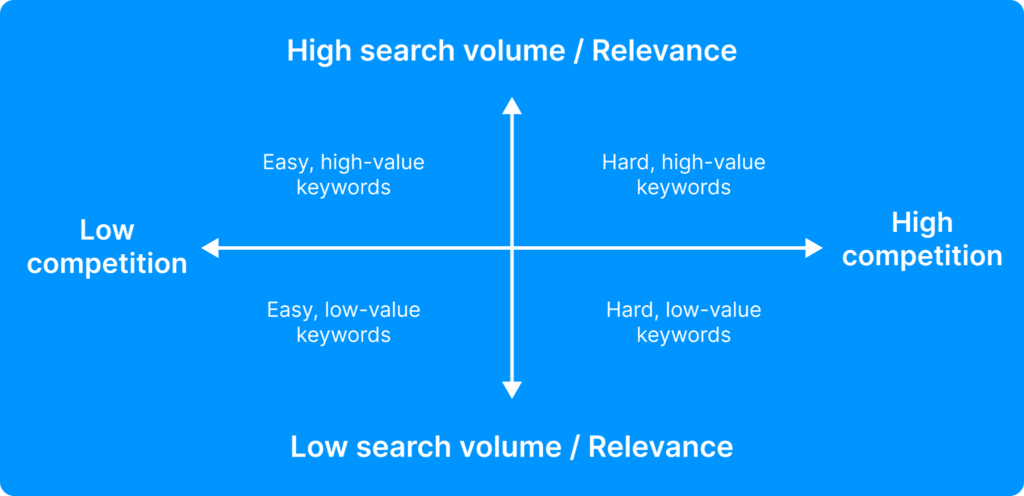
Remember, Google’s main goal is to provide searchers with the most helpful and relevant information. So, think about user intent—why they’re searching for something:
- Informational: “How to bake bread”
- Transactional: “Buy iPhone 16”
- Navigational: “[Brand name] customer support”
Also, check what’s already ranking for your chosen keywords. Look at the top results to understand what works and where you can stand out.
See how I approach it:
- Analyze the top results: Look at what ranks well—blog posts, videos, product pages—and notice how it’s structured.
- Evaluate content quality: Check if the content is detailed and informative. Can you add more value?
- Look for keyword use: See how competitors use keywords and related terms naturally.
- Identify content gaps: Find areas that competitors missed or underrepresented, where you can add more value.
- Check user engagement: Look for social shares, comments, and engagement to understand what resonates with readers.
This analysis helps you craft content that goes beyond what’s currently ranking and delivers more value to your audience.
2. Content planning
Once you’ve researched your audience, gathered your data and analyzed top-ranking content, it’s time to put that knowledge into action. Use what you’ve learned to create an outline that not only matches what people are looking for but also adds something fresh and valuable. For example, if others aren’t sharing examples or tips, make sure you include them.
Start by organizing your content with clear headings (H1, H2, H3). This helps readers easily follow along and shows search engines what your page is about.
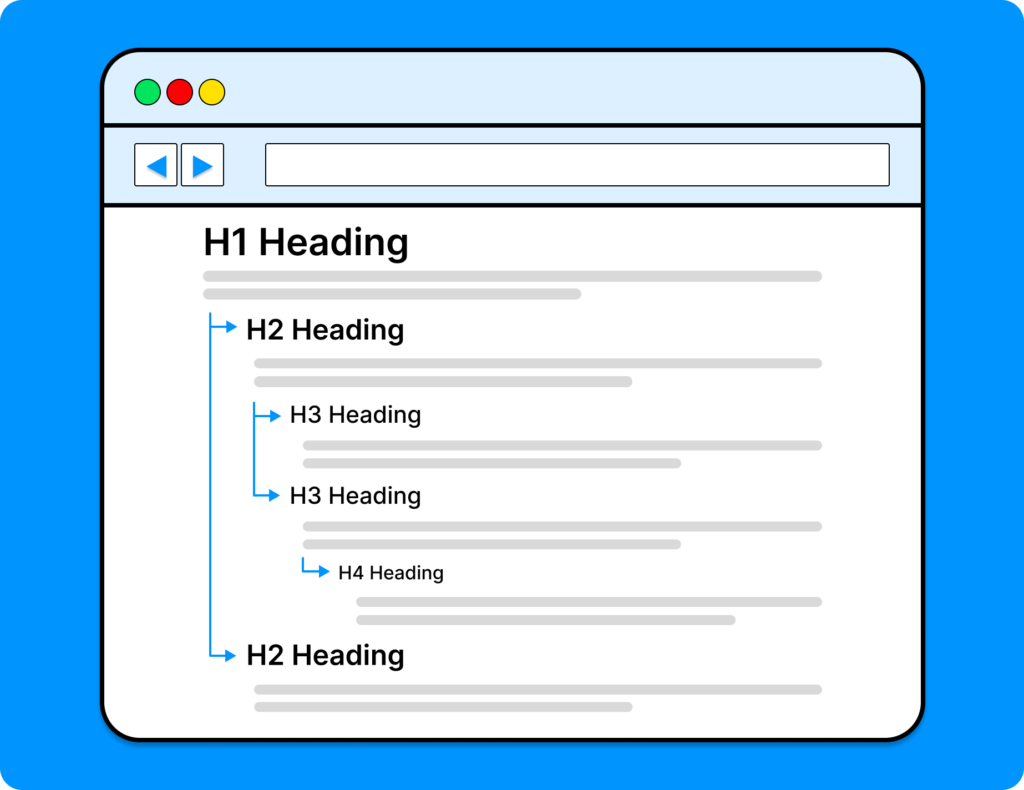
Here’s how to take your planning to the next level:
Make your content SEO-friendly
- Plan your meta description:
Write a short, catchy summary (less than 160 characters) that explains what your page is about. Use your main keyword and focus on what makes your content helpful.
Example: “Learn how to write SEO-friendly content that ranks higher and gets more clicks with this simple guide.” - Use attention-grabbing title modifiers:
Add words like “Best,” “Top,” or “Step-by-Step” to your title to make it more appealing and target specific searches.
Example: “SEO Copywriting Tips: A Beginner’s Guide to Rank Higher in 2025.” - Include LSI keywords:
These are related words or phrases people might search for along with your main keyword. Tools like Google’s “related searches” or LSIGraph can help you find them. For “SEO copywriting,” phrases like “blog writing,” “on-page SEO,” or “content marketing” would work.
Plan for engagement
- Guide the reader:
Use simple patterns like F-pattern or Z-pattern layouts to draw attention to key points. These make it easier for readers to find what they need quickly.
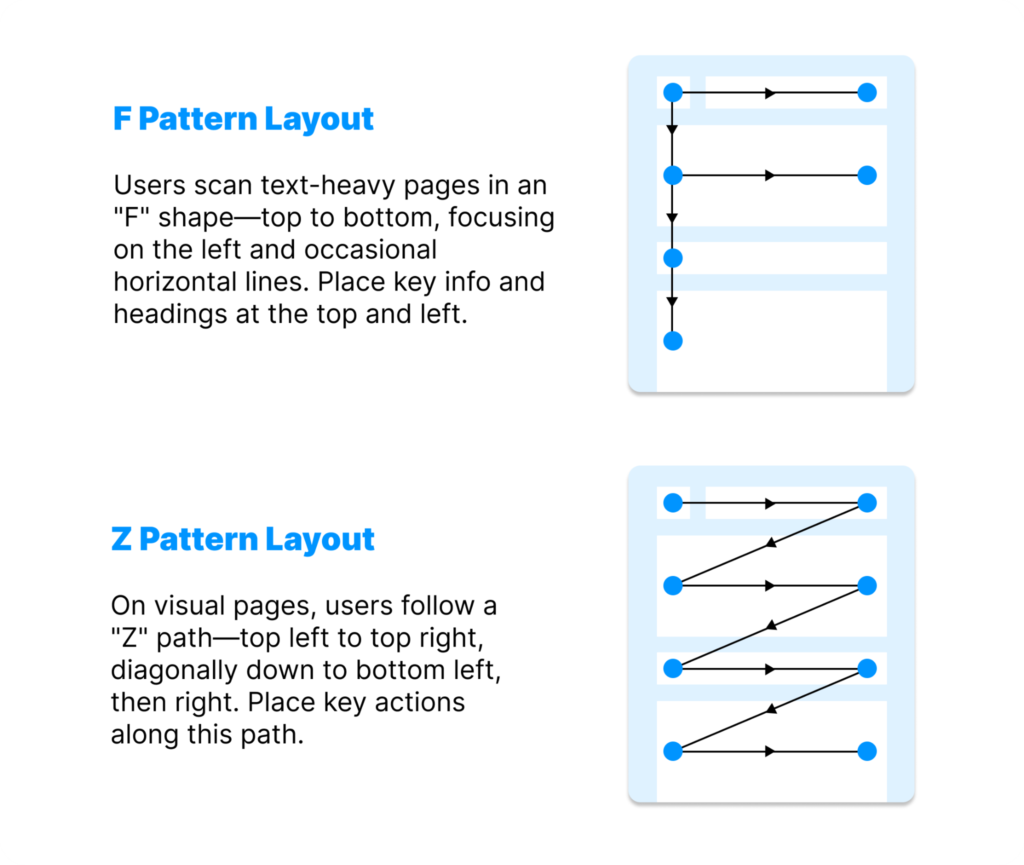
- Plan internal links:
Plan links to other pages on your site where they fit naturally. This keeps readers exploring your site and helps search engines understand your content better.
Think mobile-friendly
- Ensure your content looks great on small screens. Use short paragraphs, responsive images, and easy-to-tap links and buttons.
By turning your research into a clear and reader-friendly outline, you’re setting yourself up to create content that not only ranks but also keeps readers hooked.
3. Writing
I love this part!
This is where all the research and planning come to life. I’ll be sharing practical tips, easy techniques, and my favorite strategies to help you craft content that not only ranks but also connects with readers.
Focus on user experience
First things first—write for people, not just algorithms. Imagine you’re sitting across from your reader, explaining something over a cup of coffee.
Here’s how to keep it reader-friendly:
- Use clear and simple language—ditch the jargon.
- Write short sentences and paragraphs.
- Use bullet points or numbered lists to break up long text.
- Take the help of images or videos to explain complex topics.
Incorporate keywords naturally
Keywords matter, but they should never feel like they’re just “stuffed” in there. That’s a big no-no.
Here’s where to sprinkle them:
- Title (H1): This is your content’s headline and a major on-page ranking factor. Make it keyword-rich and enticing.
- Headings and subheadings: These help readers skim your content while signaling its structure to search engines.
- Image alt text: Describe your images using keywords. For instance, “link building process” is better than “image123.”
- URLs: Short, descriptive, and easy to remember.
For instance, yourdomain.com/seo-copywriting-guide rather than yourdomain.com/abc123.
Offer real value
Okay, now comes the heart of your content—providing value. Your readers have questions, and it’s your job to answer them.
How to provide value:
- Share unique insights or experiences (like I’m doing here!).
- Offer actionable advice they can use immediately.
- Address their pain points directly.
Keep readers hooked
Getting readers to your page is one thing. Keeping them there? That’s the challenge.
Let’s see my go-to strategies for engagement:
- Bucket brigades: These are little phrases that keep readers moving through your content.
“Here’s the deal.”
“Let me explain.”
“But wait—there’s more!” - Attention-grabbing hooks: Use frameworks like:
- PAS (Problem, Agitate, Solve): “Feeling stuck with SEO? It’s frustrating, isn’t it? Here’s how to fix it.”
- AIDA (Attention, Interest, Desire, Action): “Want to rank #1 on Google? Here’s the strategy top marketers swear by. Try it today!”
- APP (Attention, Promise, Proof): “Struggling with traffic? Our SEO tips can help. Just ask the 500+ clients who’ve seen results!”
- Storytelling: Share personal experiences to connect.
“When I initially started writing, I made every single SEO error in the book. But after a few tweaks, my traffic doubled in just three months.”
Don’t forget FAQs
FAQs are like the cherry on top of your content. Answering common questions not only helps your readers but also boosts your chances of appearing in Google’s People Also Ask section Plus, you can cover unique keywords that no competitor is covering.
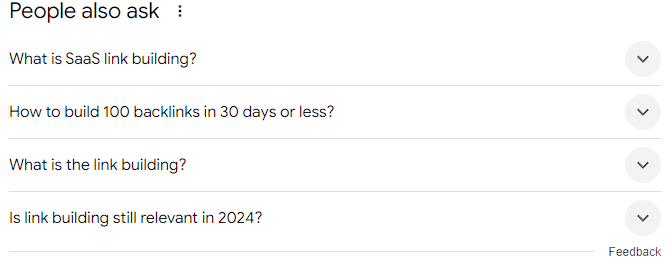
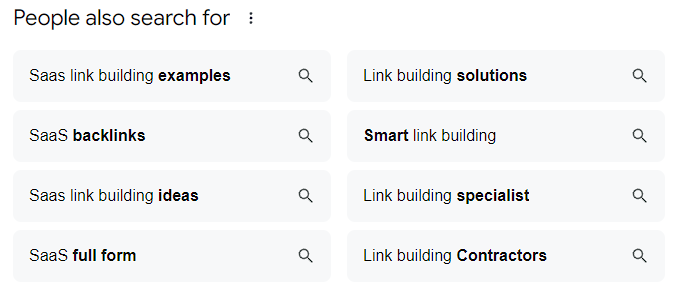
Nail the final touches
Before you hit publish, take the time to polish your content:
- Proofread: Catch typos, awkward phrasing, or grammar errors.
- Consistency: Stick to one tone and voice throughout.
- Formatting: Use headings, bullet points, and bold text to make your content easy to skim.
Add CTAs
Don’t leave your readers hanging—tell them what they should do next! Your call-to-action (CTA) is where you guide them to take the next step.
Example CTAs:
- “Ready to take your content strategy to the next level? Start now!”
- “Want more tips like this? Subscribe to my newsletter!”
Writing great content takes time, but with these tips, you’ll create something your readers (and Google) will love.
4. Optimization
- On-page optimization::
- Internal linking: Strategically link to other relevant pages within your website to improve site architecture and distribute PageRank.
- Image optimization: Optimize images by compressing them to reduce file size and improve loading speed. Use descriptive alt text for all images.
- Video optimization: If applicable, optimize videos for search engines by using relevant keywords in titles, descriptions, and tags.
- Promote your content:
- Social media: Share your content on relevant social media platforms to increase visibility and drive traffic.
- Email Marketing: Include links to your new content in your email newsletters.
- Outreach: Reach out to influencers and other relevant websites to promote your content.
- Monitor and Analyze:
- Track your results: Use Google Analytics to monitor website traffic, user behavior, and conversion rates.
- Analyze search engine rankings: Track your keyword rankings over time using tools like Google Search Console or third-party SEO tools.
- Gather user feedback: Pay attention to user comments and feedback to identify areas for improvement.
- Update and Refresh:
- Regularly review and update your content to ensure it remains accurate and relevant.
- Refresh older content with new information, images, and links to improve its visibility and user experience.
Tools for SEO copywriting
Below are some tools I use to make SEO copywriting easier, with a quick note on whether they’re free or paid:
- Google Keyword Planner (Free): A free tool for keyword research, showing search volume and competition.
- SEMrush (Paid): A comprehensive SEO tool for keyword research, competitor analysis, and content audits. Plans start at $129.95/month.
- Ahrefs (Paid): Great for keyword research and backlink analysis. Plans start at $129/month.
- Grammarly (Free/Paid): Free for basic grammar checking; the premium version ($12/month) adds tone, readability, and plagiarism checks.
- Google Search Console (Free): Essential for tracking how your pages perform in Google’s search results.
- Google Analytics (Free): Free for monitoring website traffic and user behavior.
- Google Trends (Free): Free tool to discover trending search topics.
- AlsoAsked (Free/Paid): Free for basic search results; paid plans for more in-depth research, starting at $29/month.
- Copyleaks (Paid): AI detection and plagiarism checker. Starts at $9.99/month.
- ChatGPT (Free/Paid): Free for basic use, paid plans start at $20/month for the pro version with advanced features.
I’m not diving into how to use each of these tools in this guide—please check their websites for step-by-step instructions!
Using a mix of free and paid tools can improve your workflow and content quality!
Conclusion
You’ve got the steps, now it’s time to get started! Remember, great SEO copywriting is all about understanding your audience, using the right keywords, and making your content easy to read.
If you’re looking for extra help or just want to save time, take a look at our SEO copywriting service page. We’d love to show you how we can create content that drives results and helps your business grow!







